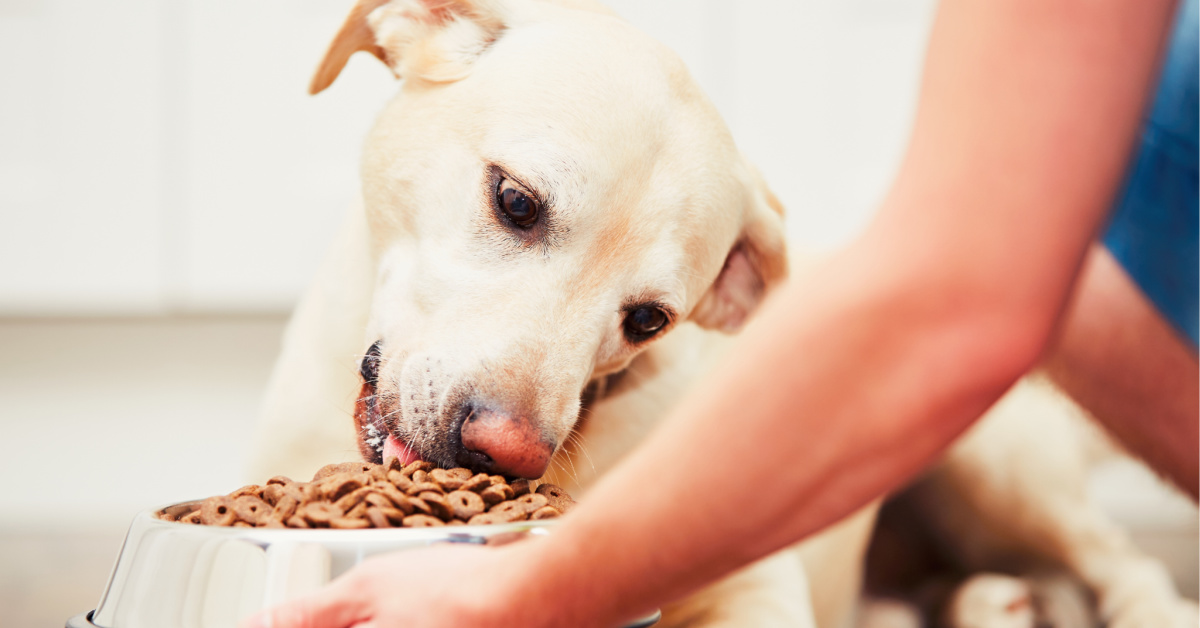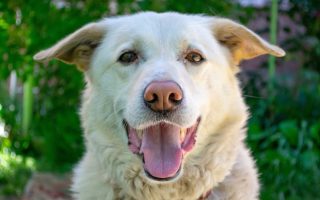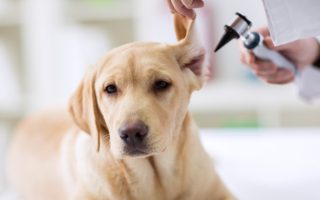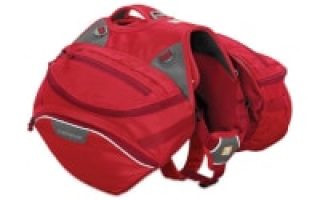Feeding your Labrador retriever can be something that feels major at first. Their nutrition should always be the top priority, but you’re not sure yet how and what to feed them.
The best answer to this would be to consult your vet as they can give you solid advice and know more about your Labrador retriever’s specific needs. But until then, here are some guidelines for feeding Labradors that can help you along the way.
Choosing the Right Food to Feed Your Labrador
Wondering whether to get your Lab dry food or wet food is a question that most pet owners have to ask themselves before deciding what dog food to buy. Although both types of food give your dog the nutrition they need, they also have their pros and cons.
Dry Food (also known as Kibble)
The main difference between dry food and wet food is the amount of moisture that is in the dog food. Dry food is, of course, less moist, while wet food has more water content, leading to the conclusion that wet food is served in more quantities to sate the nutritional needs of your Lab.
However, wet food can actually be quite expensive, so dry food is a more economical option. If you have several dogs, dry food is cheaper and more convenient than wet food. You can leave out food for your pets, and the food won’t spoil or make a mess.
Dry food is also easier to store than wet food and can come in many different variations. This makes it easier to find the right food for your Labrador.
Nevertheless, one con that dry food has is that it can be quite dull. It may not be best for dogs with sensory problems that prefer foods that give more sensory satisfaction.
Feeding your Labrador: Wet Food
Because of its taste and smell, wet food is something that your Lab will enjoy. However, they’re also more difficult to clean up when your dog makes a mess during mealtime. There’s also the added issue of wet food being more expensive. While wet food is great because your Lab can eat more in one meal and get the same caloric requirement, it can get expensive, as the amounts can stack up quite quickly.
Wet food contains more protein than dry kibble. However, the amount of protein will still depend on the kind of dog food you are buying. A major con of wet food is that it is much more difficult to store than dry food. Since you can’t keep it in your Labrador’s bowl for more than 1 or 2 hours at a time, any food left in the can should always be refrigerated. This means you’d have to spend more time feeding your Lab as opposed to just leaving dry kibble for them to eat.
So, Which Dog Food Is Best?
It is up to you. After all, both types of dog food can give your dog the nourishment they need, as long as you get them the kind that gives them the right nutrients.
Bear in mind, though, that the choice you make should also depend on how much time or money you can put into feeding your dog. If your schedule is quite busy, and you aren’t home for the whole day, then kibble is the more convenient option. If you’re not on a tight budget and have a lot of spare time, then go ahead with the canned wet food.
The important thing here is that the food you get should be the best dog food within the price range you can afford. Food is a part of your Lab’s everyday life, so they deserve quality meals. Consult your vet and try to see if they have any specific suggestions for feeding a Labrador.
When and How much to Feed your Labrador
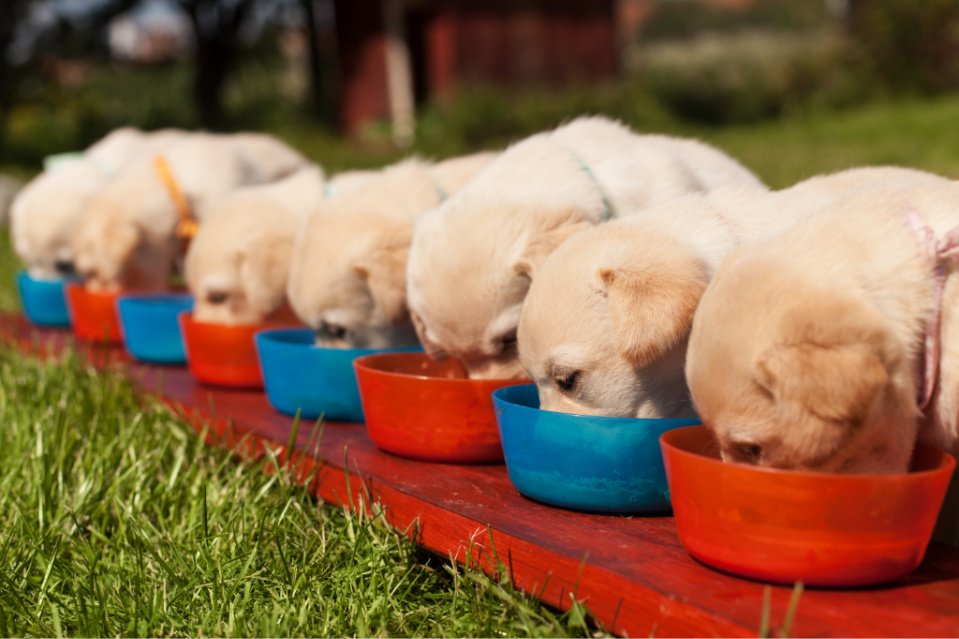
The frequency and amount of feeding your Labrador depend a lot on how old they are. Let’s break it down into two main sections: puppies and adults.
Feeding your Labrador Puppies
You need to feed Labrador puppies much more frequently than adult Labs since you can’t just feed them in one go for one day and leave it at that. Younger Labrador puppies need to be fed four times per day with at least 3 hours in between meals, and later on, this frequency will gradually lessen as your Lab grows up.
By three months, it should be down to three meals per day. After six months, you can start feeding your Lab two times per day, and it will be perfectly alright.
Feeding your Adult Labrador
Of course, you could always still feed your dog three times per day if your schedule allows, but for convenience, you can feed them two times a day. You have to closely monitor your Lab’s food intake as the breed tends to overeat. After all, obesity is a leading health problem in Labradors, and watching out for their eating habits helps you curb that tendency.
You can find directions for food intake on the packaging of the food you get for your dog. The manufacturers usually prescribe a certain amount per day, and it’s up to you to break it into the frequency you prefer. If it seems like the prescribed amount is too much or too little for your dog, you can adjust the amount, but it would be better to consult your vet about it first.
Certain dog foods are made specifically with Labrador retrievers’ energy level and needs in mind. Take note of them, as they may be the way to go for you.
Still, these guidelines aren’t exhaustive. Dogs who are overweight or have a health issue could have a different diet prescribed to them by the vet, so don’t take everything said in this article without a grain of salt.
Ultimately, the decision you make about dog food for your Lab is a personal one and must be customized for their needs. Consult your vet and find a middle ground on what the best course of action is.
Other Information for Feeding Your Labrador
Treats
Prizes for good behavior or training purposes are often treats. However, these bite-sized biscuits should not take the place of meals, so you should use them sparingly. For overweight dogs, you can even eliminate them. After all, they are just add-ons and snacks for your dog.
Water
When talking about feeding your Lab, water should also be part of the conversation. Be sure to always have fresh water available for your Labrador at all times. Clean their water bowl regularly to keep the water fresh and clean.
Table Food
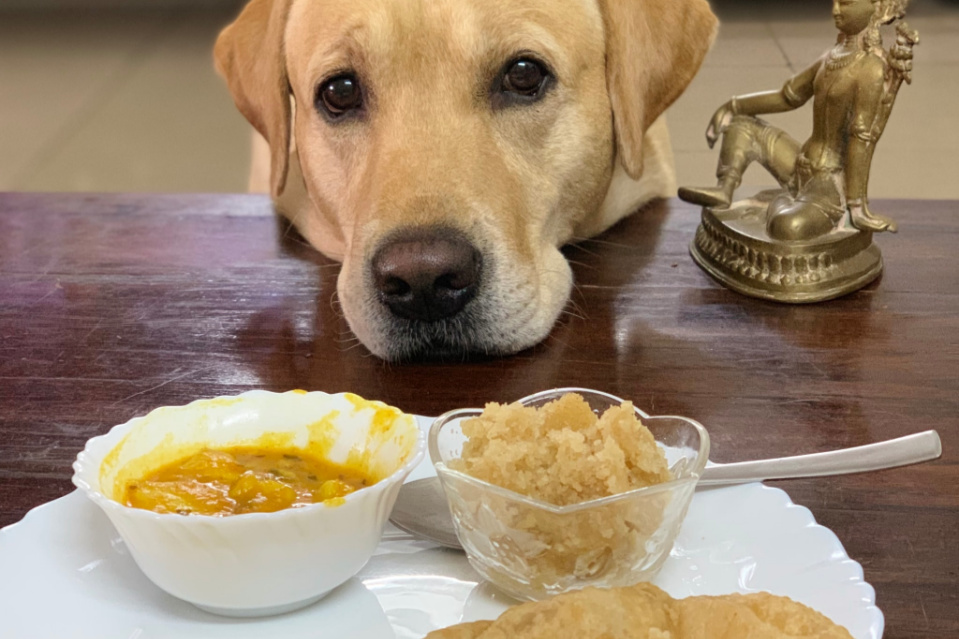
Not all kinds of human food are toxic to dogs. In fact, in this post, you will find that there are a few human foods that your Labradors can eat. However, you should take caution against giving them any food from your table, as these could contain ingredients that are dangerous for your Labrador.
Here are some examples of foods that you should avoid feeding your Labrador retriever:
● Chocolate – this one is incredibly known to be toxic to dogs, and you likely know about this already. However, you should still take caution since accidents can happen all the time and it’s better to stay vigilant.
● Onions, garlic, and chives – these items are part of many dishes that people put on their table. Feeding your dog food from your table will probably mean that it has at least one of these ingredients. Though you can feed your Labrador human food, they could accidentally ingest something you didn’t mean for them to eat if you’re not careful.
● Bones – though it may seem to make sense to give your dog bones, it’s actually not that great for them. We associate dogs with bones because many of the media and animated representations of dogs have bones related to them. However, bones can easily hurt your Lab’s digestive system when they splinter in sharp pieces. For sure, you can still give your dog bones, but cooked ones are a no-go. You may also need to supervise them to ensure they don’t hurt themselves.
These examples are just a very few of the things that could be dangerous to your Lab. There are many more out there in this post, and you should do your research to avoid any harmful accidents.
Key Takeaway on Feeding Labradors
The whole process of feeding your Labrador retriever can be intimidating, more so when you are a first-time dog owner. But don’t worry! All you have to do is research for the best options you have for your Lab.
Get food that fits your budget but is still highly nutritious for them, and make sure to consider your lifestyle before settling into a feeding routine.
Eventually, you’ll get the hang of feeding your dog, and making decisions will get easier over time. Choose wisely!

